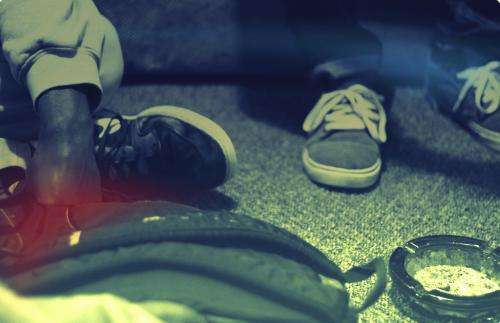New links between teen smoking and back pain

A study from Curtin University has found a bi-directional relationship between adolescent cigarette use and spinal pain.
Results show that back pain at 14 is a significant risk factor for smoking at 17, while cigarette use at 14 predicts mid back pain at 17.
The research drew on the Western Australian Pregnancy Cohort (Raine) Study and involved a cohort of 1596 adolescents at 14 years old and 1291 at 17 years old.
Professor Leon Straker says a series of multivariable logistic regressions were conducted to investigate the bi-directional relationship while controlling for psychosocial variables, including socio-economic factors, family functioning, depressed mood, perceived ability to deal with every-day problems and challenges, self-worth and internalising/externalising behaviour.
"Results show that back pain at 14 is a risk factor for cigarette use in adolescents, and also show that cigarette use at 14 is a risk factor for later mid back pain. Further, the high odds ratios suggest that the relationship between the two variables is of sufficient strength to be clinically important," says Prof Straker.
But these relationships vary with pain location. For example, in the unadjusted model, neck and shoulder pain at 14 was a significant risk factor for cigarette use at 17, but after adjusting for sex, internalising and externalising behaviours, depression, family functioning and self-worth, the relationship was found to be not significant.
Explanations behind back pain and smoking connection
Prof Straker says several mechanisms have been proposed to explain associations between spinal pain and smoking.
"From a biological perspective, smoking has been shown to reduce the amount of nutrition to the intervertebral discs by reducing blood flow to the vertebrae, which in turn may contribute to low-back pain and disc degeneration," he says.
"It has also been suggested that smoking inhibits experience of pain. Smoking may be used to cope with discomfort, which in turn increases pain in the spine, leading to a further increase in smoking."
The study reports that adolescent smoking increased from 2.6 per cent at age 14 to 21 per cent at age 17, and that 14 per cent of Australian teens are estimated to have mental health disorders.
"Smoking, psychosocial problems and spinal pain are common in adolescents, with musculoskeletal pain having been shown to impact on school and activity participation. Their high prevalence is a cause for concern," Prof Straker says.
"This study begins the exploration of prognostic factors that play a part in the onset of spinal pain or smoking behaviour in our young people."
More information: Gill, D. K., Davis, M. C., Smith, A. J. and Straker, L. M. (2014), "Bidirectional relationships between cigarette use and spinal pain in adolescents accounting for psychosocial functioning." British Journal of Health Psychology, 19: 113–131. doi: 10.1111/bjhp.12039
















